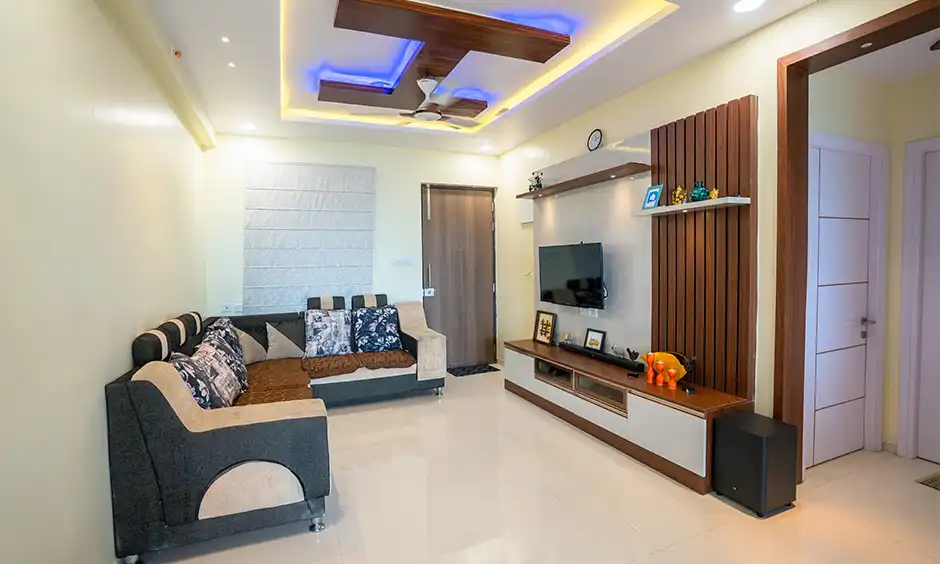Technology has revolutionized the way home interior designer visualize their creations, empowering them to communicate their ideas in a more immersive and engaging manner. In the rapidly evolving world of interior design, technology has become a game-changer.
This article explores the transformative impact of technology on interior design visualization, highlighting how innovative tools and techniques have opened up endless possibilities for designers to exceed client expectations and bring their visions to life. From virtual reality and augmented reality applications to 3D modeling software, these cutting-edge technologies have truly transformed the field of interior design.
Key Takeaways
- Home interior designers are adapting to the changing landscape by leveraging technology to revolutionize visualization and execution of designs.
- Virtual reality and augmented reality are enabling immersive experiences for clients, allowing them to explore and make informed decisions about designs.
- Digital tools such as 3D rendering software and CAD software are streamlining the design process, simplifying workflow and facilitating effective visualization and communication of concepts.
- Augmented reality is enhancing interior design presentations by overlaying virtual elements onto real-world spaces, providing clients with a realistic preview of future homes and enabling experimentation with different design elements and layouts.
The Evolving Role of Home Interior Designers
Home interior designers are adapting to the changing landscape of their profession as technology continues to revolutionize the way they visualize and execute their designs. With the advancement of technology, home interior designers now have access to a wide range of innovative tools and resources that enhance their creativity and efficiency.
Virtual reality (VR) and augmented reality (AR) have become integral to the design process, allowing designers to create immersive experiences for their clients. These technologies enable clients to virtually walk through their future spaces, making informed decisions about colors, textures, and furniture placements.
Additionally, design software and apps have made it easier for designers to collaborate with clients remotely, breaking the barriers of physical distance.
The evolving role of home interior designers is driven by the desire for freedom and flexibility, as they embrace technology to create personalized and unique living spaces.

Leveraging Technology for Enhanced Design Visualization
Technology plays a crucial role in enhancing design visualization for home interior designers. With the advancements in technology, designers now have access to a wide range of tools and software that allow them to create realistic and immersive visualizations of their designs. Here are three ways in which technology is transforming design visualization:
- Virtual Reality (VR): By using VR headsets, designers can create virtual walkthroughs of their designs, allowing clients to experience the space as if they were actually in it. This technology provides a more immersive and interactive experience, helping clients visualize the final result more accurately.
- Augmented Reality (AR): AR technology allows designers to overlay virtual elements onto the real world, making it easier to visualize how different design choices will look in a specific space. By using AR apps, designers can show clients various options in real-time, making the decision-making process more efficient.
- 3D Rendering: With the help of 3D rendering software, designers can create highly realistic visualizations of their designs. This technology allows them to showcase every detail and aspect of the design, helping clients understand how the final result will look.
Streamlining the Design Process With Digital Tools
Streamlining the design process is essential for home interior designers, and digital tools play a crucial role in achieving efficiency and effectiveness. With the advancements in technology, designers now have access to a wide range of digital tools that help simplify and streamline their workflow. These tools enable designers to create virtual representations of their design ideas, allowing them to visualize and communicate their concepts more effectively to clients.
One of the key digital tools used by interior designers is computer-aided design (CAD) software. CAD software allows designers to create detailed floor plans, 3D models, and renderings of the proposed design. This not only helps designers to accurately visualize their ideas but also enables them to make quick changes and adjustments as needed.
Another digital tool that has revolutionized the design process is virtual reality (VR) technology. VR allows designers to create immersive virtual environments, giving clients the freedom to explore and experience the design firsthand. This not only helps clients to better understand the design concept but also enables designers to gather valuable feedback and make necessary modifications.
Furthermore, cloud-based project management tools have also streamlined the design process by providing a centralized platform for collaboration and communication. These tools allow designers to easily share files, communicate with clients and team members, and track project progress in real-time.
Virtual Reality: Revolutionizing Home Interior Design
The use of virtual reality technology has revolutionized the way home interior designers create and present their designs to clients. With the help of virtual reality, designers can now offer their clients the freedom to explore and experience their future homes in a completely immersive way.
Here are three ways in which virtual reality is transforming home interior design:
- Immersive Visualization: Virtual reality allows designers to create realistic, 3D virtual environments that clients can explore. This enables clients to visualize how different design elements will look and feel in their space, helping them make more informed decisions.
- Real-Time Design Changes: Virtual reality technology also enables designers to make real-time changes to their designs. Clients can see the impact of these changes instantly, allowing for a more collaborative and efficient design process.
- Remote Collaboration: Virtual reality makes it possible for designers and clients to collaborate remotely. Clients can view and provide feedback on designs from the comfort of their own homes, eliminating the need for in-person meetings and saving time and resources.
Virtual reality is truly revolutionizing the home interior design industry, providing designers and clients alike with new levels of freedom and flexibility in the design process.
Embracing Augmented Reality in Interior Design Presentations
Augmented reality is becoming an essential tool for the modern home interior designer, enhancing their presentations and bringing designs to life. With the advancement of technology, interior designers can now use augmented reality to create immersive experiences for their clients.
By leveraging AR, designers can overlay virtual furniture, decor, and finishes onto real-world spaces, giving clients a realistic preview of how their home will look like before any physical changes are made. This technology allows designers to showcase their vision in a more interactive and engaging way, enabling clients to better understand and visualize the final outcome.
Augmented reality also offers the freedom to experiment with different design elements, colors, and layouts, empowering both designers and clients to make informed decisions and ensure that every detail is perfect. By embracing augmented reality, interior designers can revolutionize their presentations and provide a truly innovative experience for their clients.
Frequently Asked Questions
What Is the Role of Technology in Transforming Interior Design Visualization?
Technology plays a pivotal role in transforming interior design visualization by enabling designers to create immersive and realistic digital renderings. With advanced tools and software, designers can accurately visualize and communicate their ideas, enhancing the overall design process and client experience.
How Can Home Interior Designers Leverage Technology to Enhance Their Design Visualization Skills?
Home interior designers can leverage technology to enhance their design visualization skills by utilizing advanced software and virtual reality tools. These technologies allow for more accurate and immersive representations of design concepts, enabling designers to better communicate their ideas to clients.
What Digital Tools Can Be Used to Streamline the Design Process in Home Interior Design?
Digital tools such as 3D modeling software, virtual reality, and augmented reality can streamline the design process in home interior design. These technologies allow designers to create realistic visualizations and make informed decisions before implementing their designs.
How Does Virtual Reality Revolutionize the Field of Home Interior Design?
Virtual reality revolutionizes the field of home interior design by providing immersive and interactive experiences. Designers can create realistic virtual environments, allowing clients to visualize and make informed decisions about their spaces before any physical changes are made.
How Can Augmented Reality Be Embraced in Interior Design Presentations?
Augmented reality can be embraced in interior design presentations by allowing designers to overlay virtual objects and designs onto real-world spaces, giving clients a realistic visualization of how their space will look, enhancing the decision-making process, and ultimately improving customer satisfaction.
Conclusion
In conclusion, technology has revolutionized the field of home interior design visualization, providing designers with innovative tools and techniques to enhance their creative process.
Through virtual reality, augmented reality, 3D modeling, and rendering software, designers can effectively communicate their ideas and bring their visions to life.
These cutting-edge technologies have allowed designers to create realistic and interactive visual representations, enabling clients to better understand and visualize proposed spaces.
With technology as a powerful tool, home interior designers can deliver exceptional results and surpass client expectations in the competitive industry.
You may also like to read:
Revolutionizing Home Building: Tech Innovations for Sustainable Living



